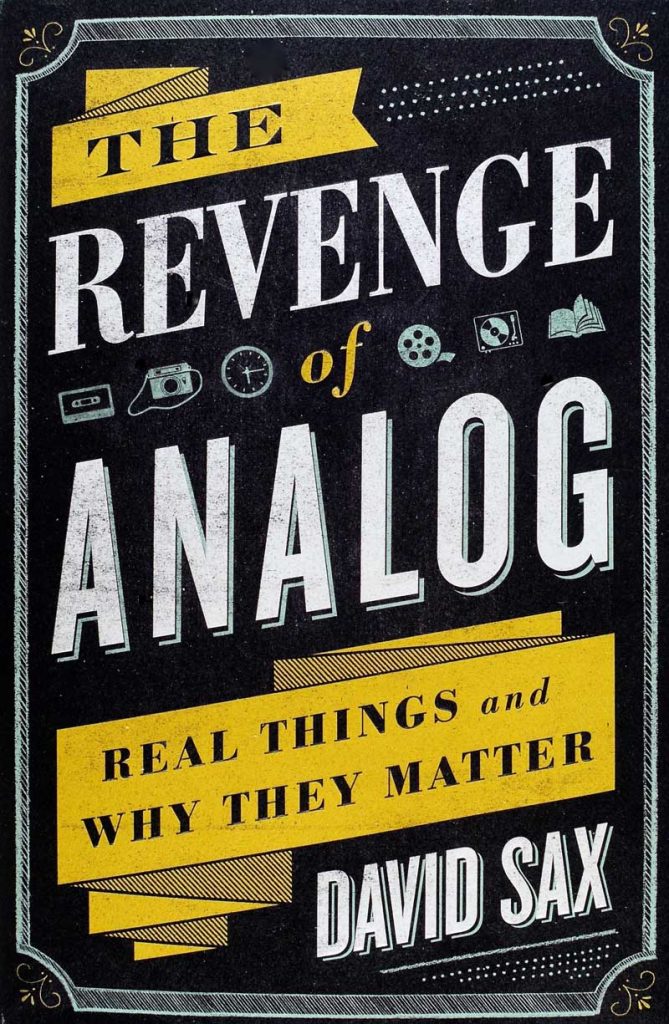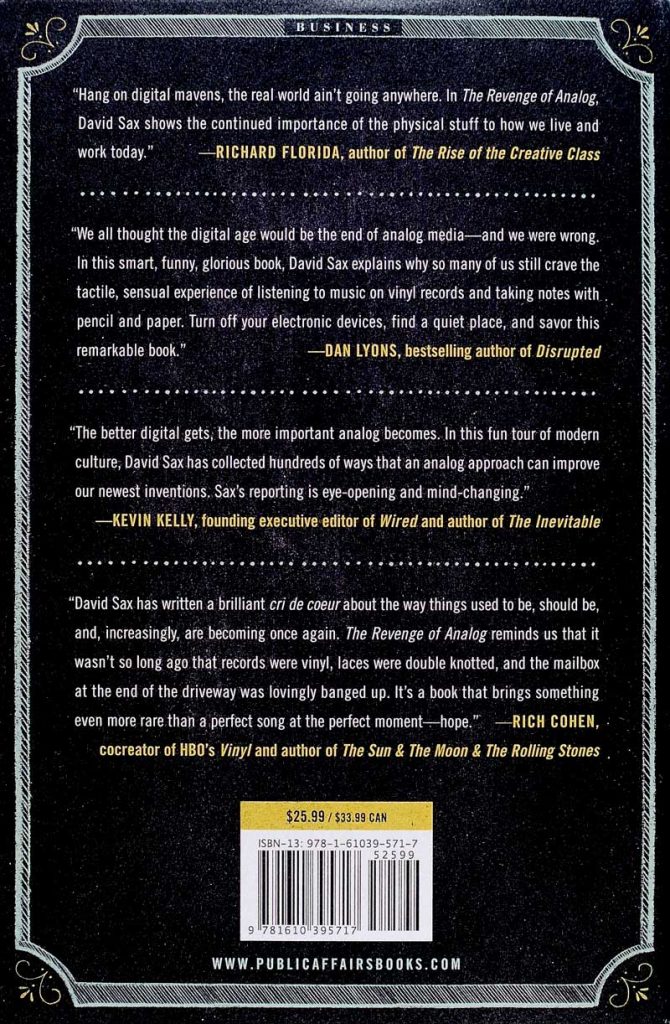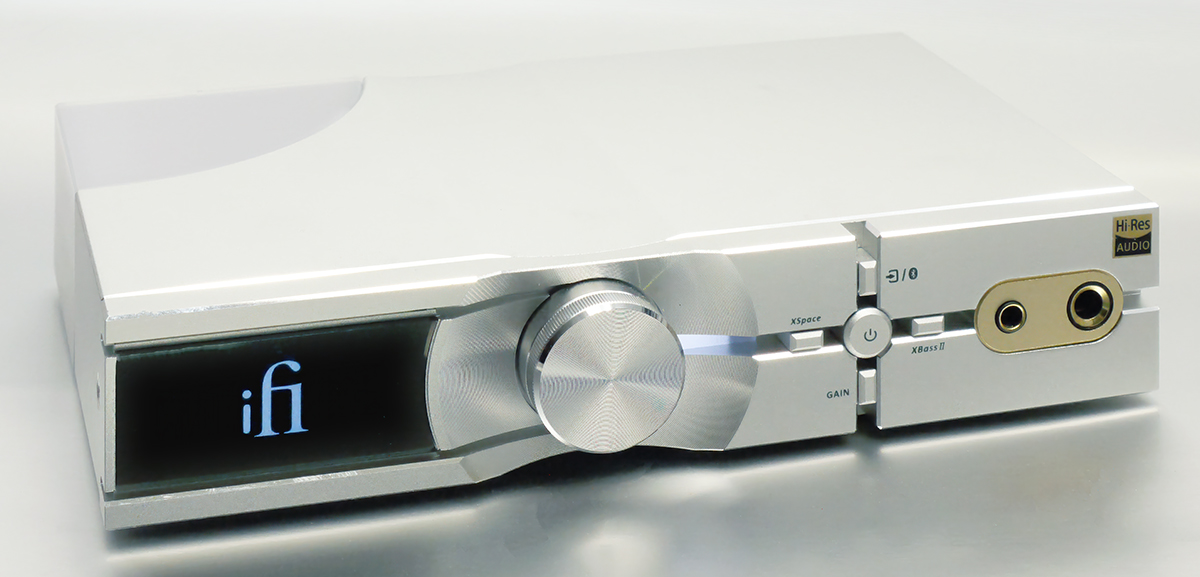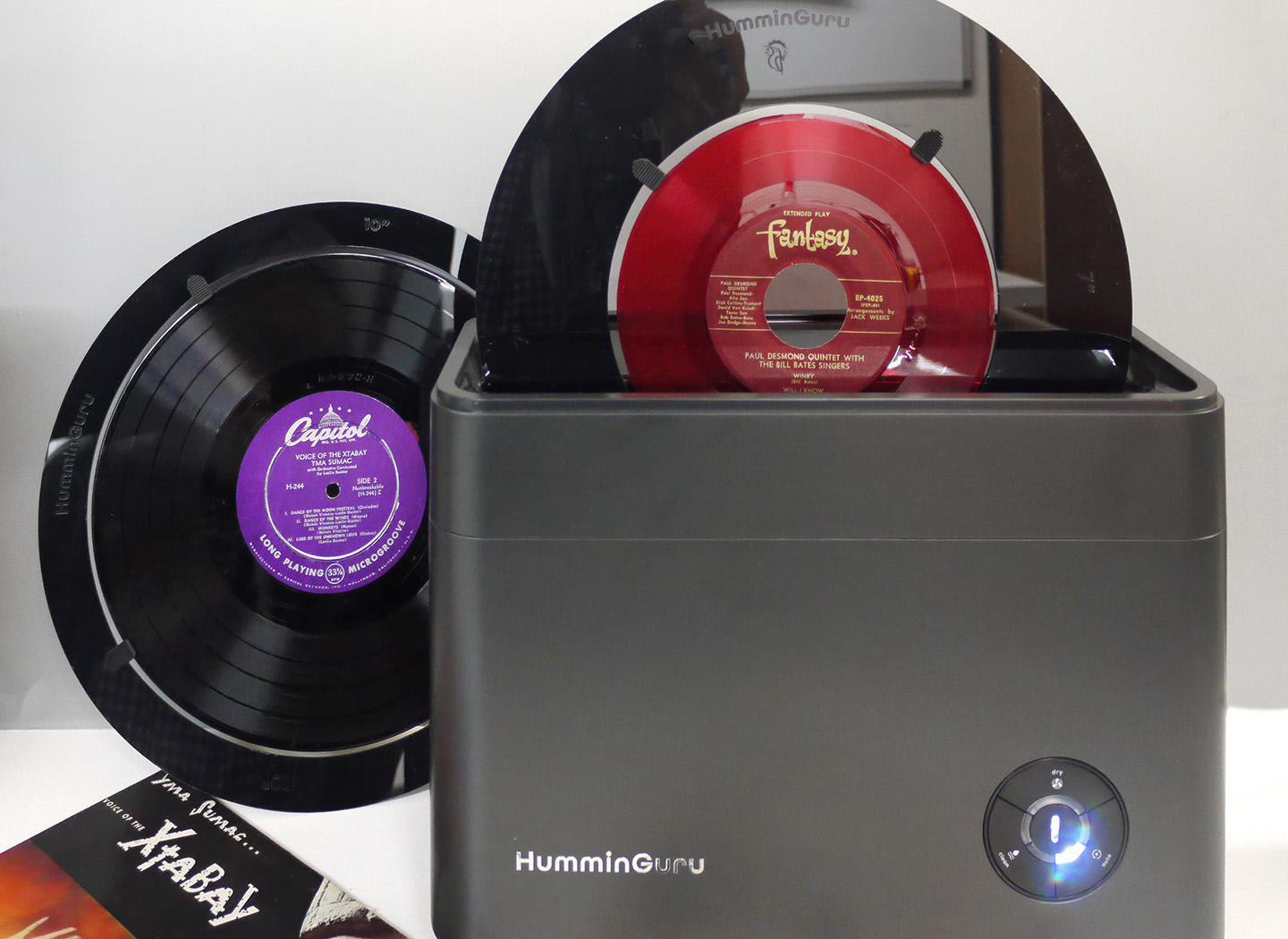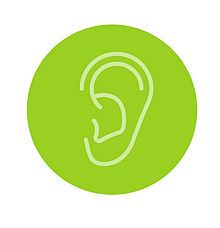The Revenge of Analog: Real Things and Why They Matter, by David Sax
The morning of Black Friday, just two weeks and counting past a very bleak Wednesday, and still a bit drowsy from the previous day's over-indulgence, I opened the front door and stooped to pick up our copy of the NY Times. Instead of the Gray Lady's latest details on the Trumpocalypse, what greeted me was a four-page, full-sheet, wraparound pictorial segment advertising…a new turntable.
The timing was perfect. No, I was not about to run out and buy one on the most insane shopping day of the year, but I knew what I was looking at: the Runwell Turntable from Shinola. And it brought a smile because in the dreary days post-post-fact election, I had felt need for distraction, and had just finished The Revenge of Analog: Real Things and Why They Matter, by David Sax. The author, who has contributed to publications like Bloomberg Business, Vanity Fair, GQ, and New York Magazine, partakes in a tradition of commentary on (primarily) American culture and commerce that traces back to Alexis de Tocqueville.
Shinola, it turns out, plays a central role (Chapter 7, The Revenge of Work) in the book. Shinola's (and Sax's) primary focus is on Watches Made in Detroit (the company founder was ex-CEO of Fossil). The turntable itself is only mentioned along with headphones as planned future products, per an announcement made some months after Sax visited the factory from his home in Toronto:
"This coincided with a new partnership between Shinola and Third Man Records, which included a Third Man store opening in Detroit next to Shinola's own shop, with a brand-new Third Man vinyl record-pressing plant set up behind it. It was a fitting return home for Jack White [of the White Stripes, and owner of Third Man] and Ben Blackwell [his nephew, who runs it], whose music careers began in the very neighborhood."
Jack White and Third Man Records are actually introduced in Chapter 1, The Revenge of Analog, and it is that sort of intersection and convergence that helps make the narrative, for lack of a better word, feel analog. Sax structures the book much like a "concept" album from back in the day, two parts/sides broken up into several chapters/tracks: The Revenge of Analog Things (Vinyl, Paper, Film, Board Games), and The Revenge of Analog Ideas (Print, Retail, Work, School, Analog in Digital). There is an Epilogue/Coda, The Revenge of Summer. Although the segments might seem unrelated, the presentation is mostly linear and often consequential, so shuffle play is not encouraged. Of course, diehard Beatlemaniacs may prefer to read it backwards.
In his introduction, Sax relates how, in 2012, a new record store that opened near his home-more specifically an Aretha Franklin LP they played-triggered a serious vinyl jones despite decades of loading files on his computer and iPhone. Born in 1979, he barely predates the CD, so discovering the "carnal pleasure of physically browsing and buying music" was something of a revelation. Writers do tend towards introspection, and he soon found himself exploring the vinyl subculture and mulling other areas where digital technology had not entirely erased tradition, and where old forms were regaining credence. Sax's previous books dealt with delicatessens and food fads; I'm sure were there digital alternatives, he'd have included farmers' markets and craft breweries, to cite just two other welcome revivals. Instead, for the purpose of exposition, he basically redefines the word "analog" as representing an opposite of all that is digital; late in the book he relates that in the Silicon Valley, reality-not-digital is acronymed as IRL, In Real Life, just in case we are not paying attention.
Let me be clear: this is not a book about analog audio. To wit, there is no mention of the endless efforts of our St. Michael of the Stylus, and given AnalogPlanet.com is the #1 Google hit for "analog audio turntable", this might be intentional, as no audio magazines or websites are cited in the bibliography either. The technical characteristics or sonic qualities of vinyl rate but a single paragraph, as "none of that really matters to the vast majority of listeners, who aren't really that concerned about sound quality". Instead, the focus is on the revitalization of the LP pressing industry (Sax visits Nashville's United Record Pressing plant), of distribution (new and old record stores), the new customers (under-25 kids replacing "crusty old dudes"), and studios' renewed interest in analog recording. The only name familiar to most of Positive Feedback's readership is probably the always-colorful Chad Kassem of Analogue Productions, and he makes the cut only to loft an F-bomb about the difficulty in finding serviceable LP pressing machines for his Quality Record Pressings plant. The growth of Pro-Jekt turntables gets due attention, but Sax seems more impressed that Kentucky-based Crosley moves over a million junkers a year via Target and Walmart. This down-market perspective suggests the book started out as a piece for one of Sax's regular outlets, perhaps Bloomberg Business. One wonders what he would now make of the $2500 Shinola Runwell turntable, with its VPI audiophile DNA.
Why then should I recommend this book to a community of audiophiles?
First, because as Sax moves from vinyl to other revenge-worthy topics, his commentary increasingly balances the commerce with the art, the quantities with the qualities of things-making it obvious to those who care about the sound of vinyl precisely what is missing from his perspective in Chapter 1. So please, can somebody just drag this dude to TAVES next year? And get those bad boys from Schiit to demo their gear with a Shinola as front end?
Second, as an industry (or customer thereof), it should be sobering to encounter a critique that, from the perspective of the most enthusiastic advocates of the subject, so misses the point. The performance-oriented Specialist Audio industry faces many challenges, not least the conflicting 1% vs. the masses business models: Wilson vs. Bose, Audeze vs. Beats, etc. Yes, audiophiles always get snarky bad press, not least because the "High-End" is by definition elitist. As Sax himself writes primarily for elitist niche publications, the other examples he brings to the table should be of particular interest, evidencing repeatedly that folks will pay more for perceived better, if it "feels right" and is marketed well. If it matters not that Shinola watches are in the $400-2000 range, are Shinola customers not open to higher-fi in the same price range?
Third, by simply reading the Times in the present climate, I do declare myself an elitist. Hell, I'm a retired college professor who drives a hybrid. Worse, back in the last century I published Primyl Vinyl, a newsletter for audiophile record collectors. Long before that, I worked at Polaroid in its heyday, and I taught photography in art colleges for 30 years. I read the chapter on The Revenge of Film with an equally jaundiced eye. So I do take all this personally, but I also understand that writers relate only what they learn from those who actually know more than they will say. The overall theme of Revenge is finding a way forward through rediscovering old ways that still matter, and I'm OK with that. I'll happily put it on my "I never really thought about…" shelf alongside Thomas Frank, Naomi Klein, and the collected works of Malcolm Gladwell; if your cultural guides run more to Ann Coulter and Glenn Beck, you can wait for the paperback, easier to burn. Regardless, the Kindle version would be just plain wrong.
I've lived in the West, Southwest, Midwest and Northeast. At present, I am apartment-bound in an upscale section of Boston, without a dedicated listening space but just a short walk from Symphony Hall. Even closer is one of the city's upscale urban malls. There, about halfway between Barnes & Noble (now! again! with vinyl!) and the Tesla showroom, across from Microsoft's lame copy of the Apple store across the street, and just a few paces from a Moleskine kiosk (see also the Revenge of Paper), has now opened a Shinola storefront. My 30 year-old Timex keeps on tickin', but I stopped by just to check out the turntable. I found it tucked in a corner, hooked up to a pair of self-powered speakers (future product?), and playing Xmas tunes (it is still a mall, after all). In truth, it didn't sound particularly good, but I doubt much attention had been given to setting it up-the clerk I spoke to knew little about it beyond the enviable coolness factor. It manages to look both handsome and humble, two key attributes upping the Spousal Acceptance Factor. As for nostalgia, in aspect the Shinola combo reminded me immediately of my old KLH Model 20, a 3-piece dorm-ready system made some fifty years ago just a mile or two across the Charles in Cambridge that helped get me hooked on audio, for less than a tenth the price.
Since sitting down to write this piece while on vacation, two other bits of news:
First, the Times has informed me that The Revenge of Analog made their critics' Top Books of 2016 list. "Captivating", they called it. So if you can't abide the Times on principle, or just need something to offset Hillbilly Elegy before the Inaugural, you heard it here first.
Second, even as the owner of four UK-built turntables, I'm impressed that the Brits spent more money on LPs than downloads pre-Xmas, post Brexit: "People will still be buying fucking Dark Side of the Moon on vinyl when we've all been dead a hundred years".
The Revenge of Analog: Real Things and Why They Matter, by David Sax
Public Affairs Books, New York, 2016
283 pp., $25.99




